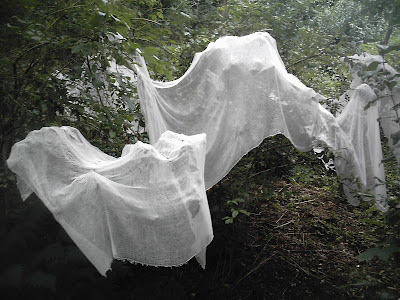Minnie's younger brother Frederic recorded a series of reminiscences in 1976. Here is an excerpt, which deals with his visits to both sets of grandparents in Mindenville, just west of Fort Plain:
 |
| Frederic and Jonas in Mindenville 1912 |
When I was quite
young, Mother and I used to go and visit my grandparents frequently. We’d get
up in the morning and go over to the West Shore Railroad and ride what was
called the milk train, catching it at Fort Plain, and it was about a
twenty-minute ride up to Mindenville.
It was at
Mindenville that both my mother and dad grew up and were married. Grandpa and
Grandma Van Slyke (Jonas and Margaret) had a house which was very near the
right-of-way of the West Shore Railroad, and Grandpa John and Grandma Barbara
Fineour had a farm which was about a mile farther up the dirt road from the
little hamlet of Mindenville.
Once in a while we
stayed overnight, and I can remember lying in bed in my grandmother’s house
just a few feet from the railroad tracks, and hearing the big freight trains
come roaring down the tracks. Sometimes it sounded as though they were going to
go right through the middle of the house, and actually the house shook with the
vibration of these passing trains.
 |
| Jonas & Margaret Van Slyke, 1912 |
Usually we only
stayed during the day and in the afternoon, we’d walk up the dusty path
alongside the road and visit Grandma and Grandpa Fineour, and then coming back,
we’d catch the train, which came along about half past five, and we would be
home in time for my mother to get supper for the family.
 |
| John and Barbara Fineour, ca. 1911 |
These were nice
trips, and I looked forward to them as a youngster with a great deal of
anticipation. Mindenville was a nice little hamlet in those days, and it was characterized
by a big platform along the railroad track. The farmers came down from all
directions in the morning and unloaded their cans of milk onto this platform.
The milk train started somewhere west, probably up near Rome, and came through and
picked up the cans of milk and took them eastward to the metropolitan areas,
where it was processed and eventually consumed; and in the morning, the train
came back the other way and stopped at all the towns and picked up passengers
and freight, and it usually had one or two coaches for passengers at the rear
of the train.
My mother used to
tell of the construction of this railroad in the early 1880’s when she was a
rather young girl, and how the contractors imported Italian labor and housed
them in labor camps, one of which was just a little west of Mindenville. The
Dutch- and German-American natives were very impressed as the bands of Italian
families came walking up the railroad tracks, many of them playing concertinas
and singing, and with a type of dress that was new to the old residents of that
area. They were somewhat afraid of these newcomers for a long time.
The opening of the
West Shore Railroad was a spectacular affair because a westbound train and an eastbound
train collided head-on at a curve near what is called Dievendorf Hill, west of
Fort Plain. One of the engines toppled into the Erie Canal,
and there were quite a few injuries. I can’t remember exactly whether my mother
was on that run or not, but it was a big celebration and maybe she just was told
about the incident or accident by some neighbors, because many people flocked
to get a ride on the first train. At least one of the engineers was killed, and
it was a very unfortunate and spectacular opening of that particular section of
the railroad.
Notes:
The 1870 census of Mindenville lists John Fineour as a 44-year old farmer. Barbara, ten years younger, is listed as "keeping house." Their place of birth is listed as Bavaria. Their three children are John, Jr., age 14; Fred, age 8; and Mary, age 4. The two boys are attending school, while little Mary is still "at home." Other records indicate that John Sr. was born in Neustadt, Germany, on August 27, 1825; he is buried in Prospect Hill Cemetery in Canajoharie. Barbara was born on March 27, 1837. The census lists the value of the Fineour farm as $7000, a considerable sum for the time, and twice as much as the second most valuable piece of property listed on the same page.
The 1880 census of Mindenville lists Jonas Van Slyke as a lock tender, age 39, living with his wife Margaret, also 39; their three daughters and a son; and Jonas's parents, David and Sally. For more about Jonas and his father, see
The Family Bible, Part II.
In Fort Plain-Nelliston History (1948), historian Nelson Greene cites the train wreck described by Frederic. This happened in 1883 upon the completion of the West Shore Railroad. The railroad was so named because it came up from the southern part of the state along the west shore of the Hudson River.
For additional excerpts from Great-Uncle Frederic's reminiscences, see:











